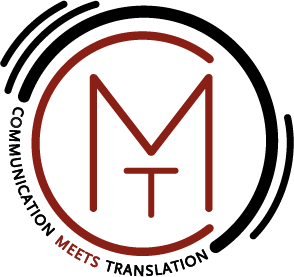Sworn or notarised translation, legalised or apostilled translation and certified translation
The terms sworn translation, notarised translation, legalised or apostilled translation and certified translation are often confusing. Customers who contact CMT can rely on our extensive experience in this field, as we support and direct them to the correct service. Let’s explain the difference and associate the correct function with each service.
Sworn or notarised translation
In Italy and many other countries, to grant legal value to a translation it must be sworn (or notarised). Sworn translations (or notarised translations) make the translated text official through a specific process carried out at specific offices. To obtain a sworn translation in Italy, an authorised translator must declare before a court registrar or notary that the translated document is true to the original.
Each court has its own procedure for this. The Court of Milan grants the authorisation to sign an oath statement to translators registered with the CTU (Register of Technical Experts), the Experts Category at the Chamber of Commerce (category: translators and interpreters) or even those registered with professional interpreter and translator associations pursuant to Italian Law no.4/2013 and official lists of translators and interpreters at public organisations. The oath statement is then signed and stamped by the court official and attached to the sworn translation, which requires revenue stamps.
When is sworn translation or notarised translation used?
There are many reasons why customers request a sworn translation. It is common in the medical and pharmaceutical sector (medical reports, medical records, drug information leaflets), the corporate sector (to take part in tenders, to open companies and branches, for legal disputes and litigation), in a judicial context (proceedings) and in relation to notary documents (title deeds, inheritance, purchases and sales, powers of attorney). Birth certificates are another example, as is the registration of trademarks and patents, access to education courses, education certificates, obtaining loans and for employment reasons.
Legalised or apostilled translation
In some cases the signature of an official (court clerk, notary) on a sworn translation has no legal value in a foreign jurisdiction. This is when the oath must be followed by an additional procedure, called legalisation, so that a translated and sworn document issued by an Italian organisation is also official in a foreign country. Legalised translations are carried out at the Public Prosecutor’s Office.
This step is essential for countries that did not sign the Hague Apostille Convention of 5 October 1961. For the nations that did sign it, however, an apostille is sufficient. An apostille is simply a validation stamp, a certification of the qualification and work carried out by the official who signed the document in question.
Certified translation
A certified translation can be requested if a guarantee of the accuracy and faithfulness of the translation to the original text is desired. The certification statement is issued directly by CMT and has no legal value. This said, the certified translation is proof that CMT operates in full compliance with translation best practice: ISO 9001:2015 covers the quality management of all processes associated with translation, localisation, transcription, interpreting and events, while ISO 17100:2017 governs every aspect of translation services, from the selection of translators and proofreading, to traceability and customer satisfaction.

Post-editing
Though machine translation is being updated continuously and offers increasingly more optimal solutions to customers, it is not always the best option. CMT provides custom consulting to achieve the best result in the established turnarounds.
Post-editing is sometimes required to improve the end result. This task is carried out by expert translators who read through and correct the texts that have been translated automatically.
Expert translators contribute where there is a lack of uniform language, appropriate terminology, consistency and respect for the style and intention of the author. This human intervention adds value and ensures the quality of the translation.
ISO quality at CMT
The international standard for post-edited translations carried out
using machine translation has been in force since 2017. CMT is 100% compliant with the
international best practices established by the ISO.

